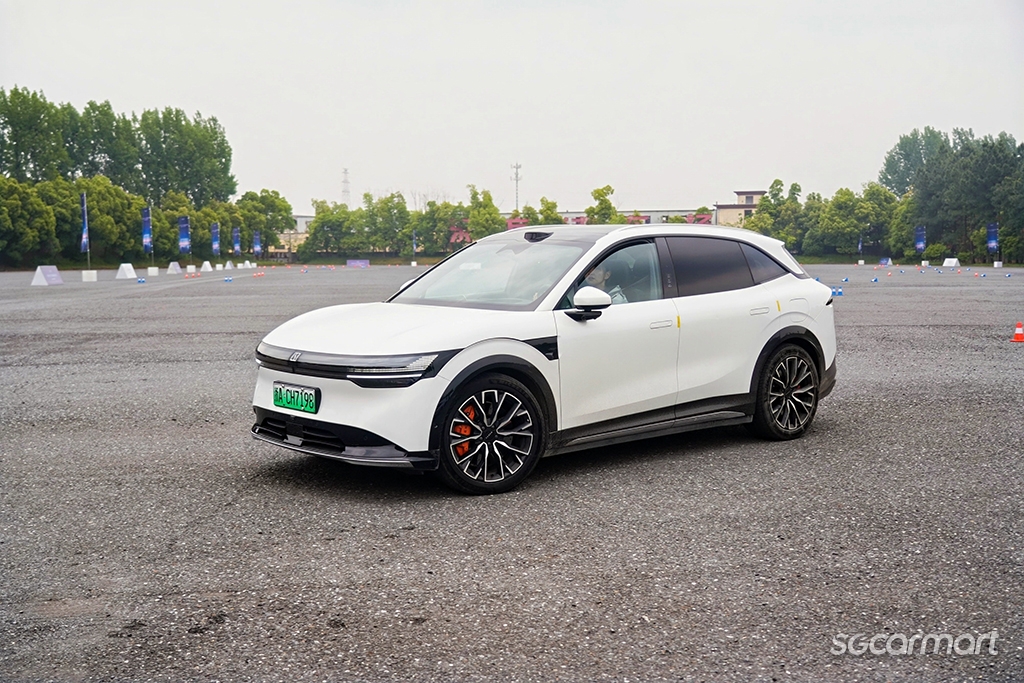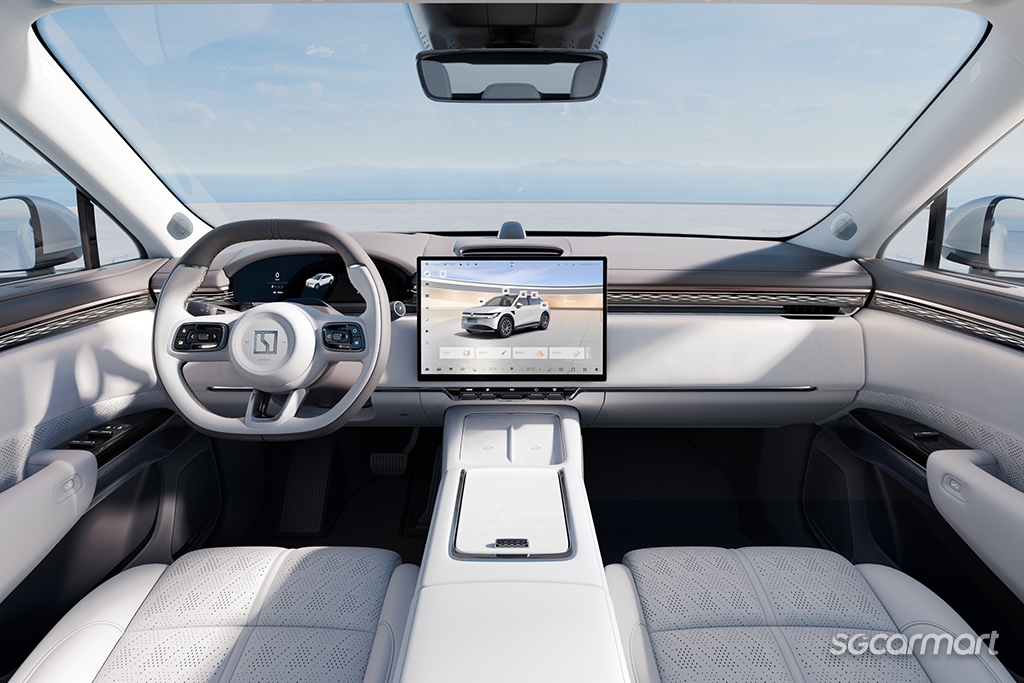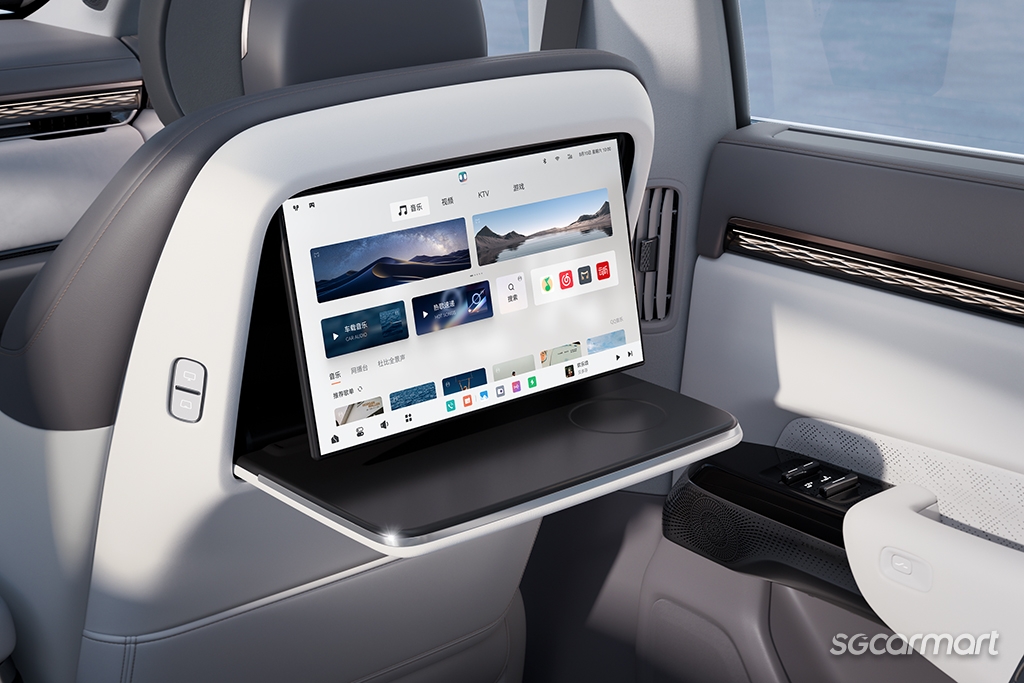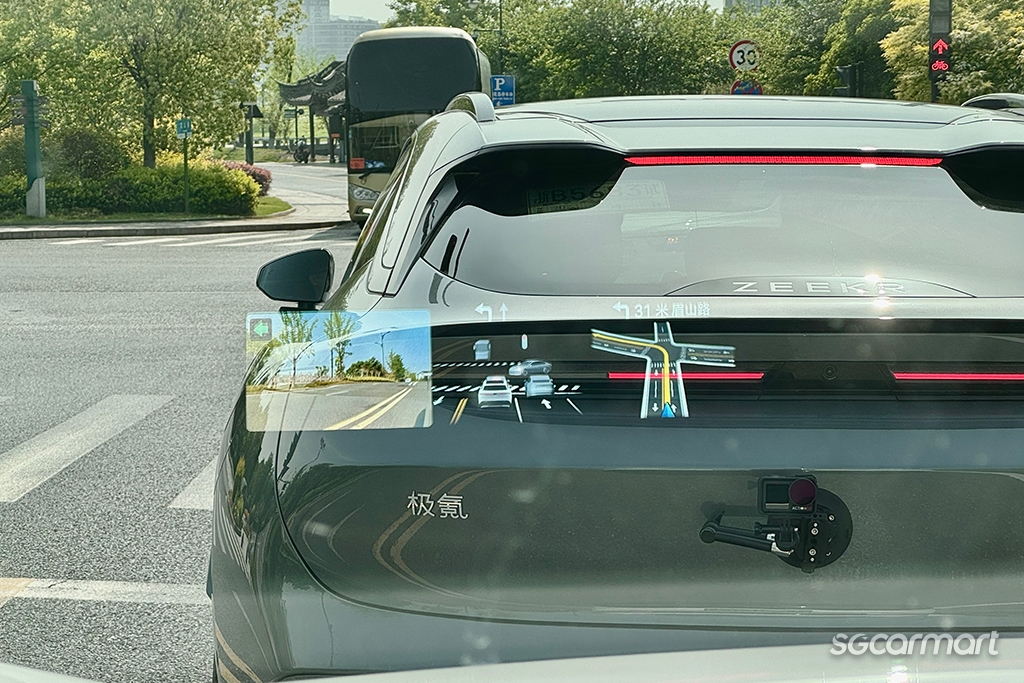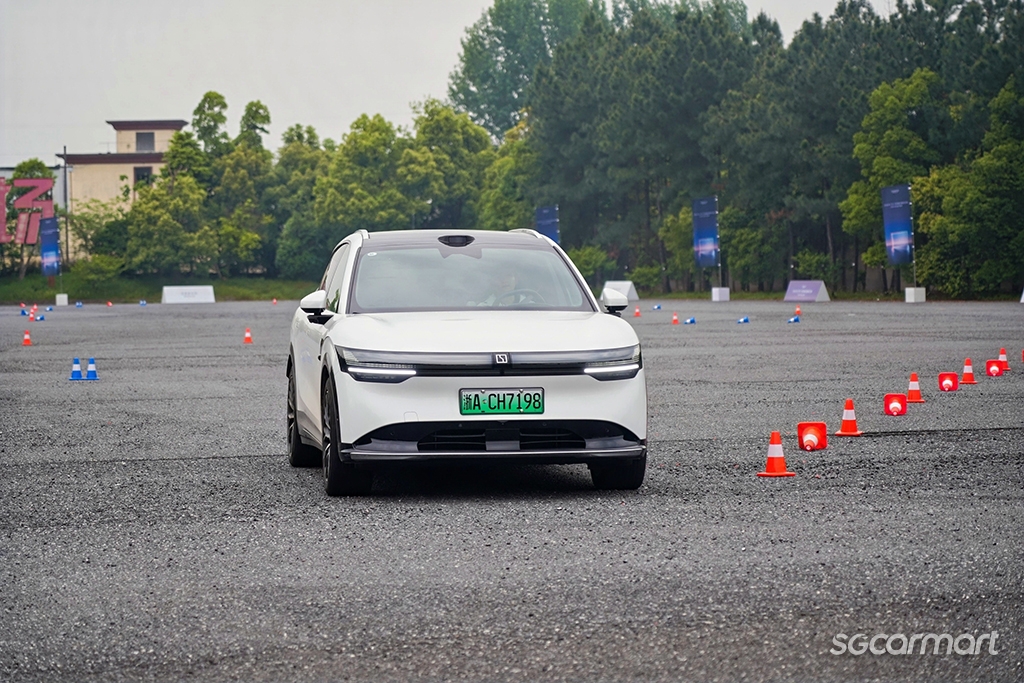Zeekr 7X First Drive Review
10 May 2025|7,392 views
What We Like
High levels of equipment
Automatic doors
Extensive ADAS functionality
Easy to drive
Generous performance and range
What We Dislike
Unclear on what the Singapore model will get in terms of features/equipment
The Zeekr 7X will be the next Zeekr model to be launched in Singapore, slated to be officially introduced in Q3 2025. During our recent trip to China, we had the opportunity to do a brief road test of the 7X to get some early impressions ahead of its launch in Singapore.
It's perhaps easiest to understand the 7X by talking about its size and segment positioning: At 4,825mm long, 1,930mm wide and 1,656mm tall, it fits squarely into the mid-size SUV segment, a crowded segment that counts models like the Tesla Model Y and XPeng G6 as obvious EV competitors, but also the segment where stalwart premium nameplates like the GLC and X3 occupy (and their now electric counterparts, too). It might be the single most competitive segment today, driven by unceasing customer demand for such cars.
To stand out, the 7X leans into a futuristic look, complete with customisable LED panels at the front. We'd previously seen this and speculated that there was zero chance of local homologation, but it has been hinted to us that there might be a chance of this feature being available, if perhaps with reduced functionality. It is a fun touch, where you can write little messages or display certain graphics.
In its bid to be more upmarket, the 7X features automatic doors, which pop open with a push of a button. Fancy-ish.
Move inside, and it's a relatively familiar space in the sense that it feels extremely new-Chinese-EV. Big screens? Check. Lots of features and equipment? Check. Premium looking and feeling? Check.
Where the 7X is perhaps a little unique in its segment is the way it incorporates a couple of features typically found in bigger, flagship-positioned products. One rear passenger seat (here the rear right one because the car is left-hand drive) is the prime seat - it gets its own dedicated screen with access to various entertainment functions, and also gets a reclining seat and leg rest that offers the ability to lounge. Both rear seats are also ventilated and have massage functionality (guess you really don't want to be the middle passenger here).
Otherwise, it's a premium, spacious and comfortable space, though overall fit-and-finish here feels a hair less polished than some of the other cars I spent time in.
The 7X is offered in both single-motor and dual-motor variants, and both will deliver more performance than anyone typically needs. More relevantly perhaps is the fact that it is built on an 800V architecture, which facilitates faster charging.
In terms of on-road driving, there's nothing unconventional about the way it drives - power delivery is smooth with expected immediacy on demand, the ride is generally comfortable though a little lumpy over poorer roads, and the car is easy to place on the road. In many identifiable ways, it's exactly the electric mid-size SUV you expect it to be. I will note that that the regenerative braking is quite low, even in the highest setting.
The HUD is quite feature packed. The central section shows a digital rendering of the outside conditions (and accurately recognises cars/lorries/bikes/humans), a left section displays a live blind spot camera feed when you indicate, and with navigation on there's a third section that shows your navigation instructions. The integration of the blind spot monitor in the HUD is a particular well-conceived solution (more brands should do this).
There's also plenty of talk about the autonomous technology in Chinese cars. While I had limited opportunity to test it, I will note that while I had the ACC on, when the car detected an obstacle (a rubbish cart) stationary at the side of the road, it automatically slowed down, veered outwards and slightly into the opposing lane, and then moved back into the middle of the lane after clearing the obstacle. That was pretty impressive.
It is admittedly a little hard to fully evaluate a Chinese car in China relative to the product that will eventually be offered in Singapore, because there's yet no clarity on the specification and equipment of the Singapore-bound 7X. Tech-loaded and impressive as these new technologies found on numerous Chinese cars may be, they often don't make it out of the domestic market, due to the differing regulations and homologation requirements across the globe.
That said, the 7X still presents as a competitive product, with a few luxe-leaning touches that might give it a slight leg up in a deeply competitive segment.
But the fact that it's coming at all is important for the Zeekr brand here in Singapore - it allows the brand to compete amidst this highly-popular segment, and thus have a product to bring in customers to this still relatively young brand. Of course, its potential success will hinge significantly on how the car is priced.
What We Like
High levels of equipment
Automatic doors
Extensive ADAS functionality
Easy to drive
Generous performance and range
What We Dislike
Unclear on what the Singapore model will get in terms of features/equipment
The Zeekr 7X will be the next Zeekr model to be launched in Singapore, slated to be officially introduced in Q3 2025. During our recent trip to China, we had the opportunity to do a brief road test of the 7X to get some early impressions ahead of its launch in Singapore.
It's perhaps easiest to understand the 7X by talking about its size and segment positioning: At 4,825mm long, 1,930mm wide and 1,656mm tall, it fits squarely into the mid-size SUV segment, a crowded segment that counts models like the Tesla Model Y and XPeng G6 as obvious EV competitors, but also the segment where stalwart premium nameplates like the GLC and X3 occupy (and their now electric counterparts, too). It might be the single most competitive segment today, driven by unceasing customer demand for such cars.
To stand out, the 7X leans into a futuristic look, complete with customisable LED panels at the front. We'd previously seen this and speculated that there was zero chance of local homologation, but it has been hinted to us that there might be a chance of this feature being available, if perhaps with reduced functionality. It is a fun touch, where you can write little messages or display certain graphics.
In its bid to be more upmarket, the 7X features automatic doors, which pop open with a push of a button. Fancy-ish.
Move inside, and it's a relatively familiar space in the sense that it feels extremely new-Chinese-EV. Big screens? Check. Lots of features and equipment? Check. Premium looking and feeling? Check.
Where the 7X is perhaps a little unique in its segment is the way it incorporates a couple of features typically found in bigger, flagship-positioned products. One rear passenger seat (here the rear right one because the car is left-hand drive) is the prime seat - it gets its own dedicated screen with access to various entertainment functions, and also gets a reclining seat and leg rest that offers the ability to lounge. Both rear seats are also ventilated and have massage functionality (guess you really don't want to be the middle passenger here).
Otherwise, it's a premium, spacious and comfortable space, though overall fit-and-finish here feels a hair less polished than some of the other cars I spent time in.
The 7X is offered in both single-motor and dual-motor variants, and both will deliver more performance than anyone typically needs. More relevantly perhaps is the fact that it is built on an 800V architecture, which facilitates faster charging.
In terms of on-road driving, there's nothing unconventional about the way it drives - power delivery is smooth with expected immediacy on demand, the ride is generally comfortable though a little lumpy over poorer roads, and the car is easy to place on the road. In many identifiable ways, it's exactly the electric mid-size SUV you expect it to be. I will note that that the regenerative braking is quite low, even in the highest setting.
The HUD is quite feature packed. The central section shows a digital rendering of the outside conditions (and accurately recognises cars/lorries/bikes/humans), a left section displays a live blind spot camera feed when you indicate, and with navigation on there's a third section that shows your navigation instructions. The integration of the blind spot monitor in the HUD is a particular well-conceived solution (more brands should do this).
There's also plenty of talk about the autonomous technology in Chinese cars. While I had limited opportunity to test it, I will note that while I had the ACC on, when the car detected an obstacle (a rubbish cart) stationary at the side of the road, it automatically slowed down, veered outwards and slightly into the opposing lane, and then moved back into the middle of the lane after clearing the obstacle. That was pretty impressive.
It is admittedly a little hard to fully evaluate a Chinese car in China relative to the product that will eventually be offered in Singapore, because there's yet no clarity on the specification and equipment of the Singapore-bound 7X. Tech-loaded and impressive as these new technologies found on numerous Chinese cars may be, they often don't make it out of the domestic market, due to the differing regulations and homologation requirements across the globe.
That said, the 7X still presents as a competitive product, with a few luxe-leaning touches that might give it a slight leg up in a deeply competitive segment.
But the fact that it's coming at all is important for the Zeekr brand here in Singapore - it allows the brand to compete amidst this highly-popular segment, and thus have a product to bring in customers to this still relatively young brand. Of course, its potential success will hinge significantly on how the car is priced.
Thank You For Your Subscription.
- Positioning
- Equipment
- Performance
- Evaluation














